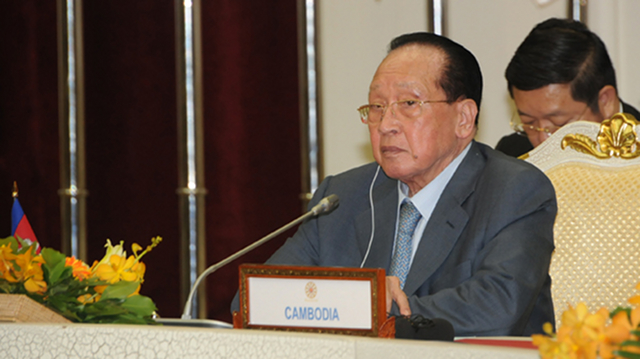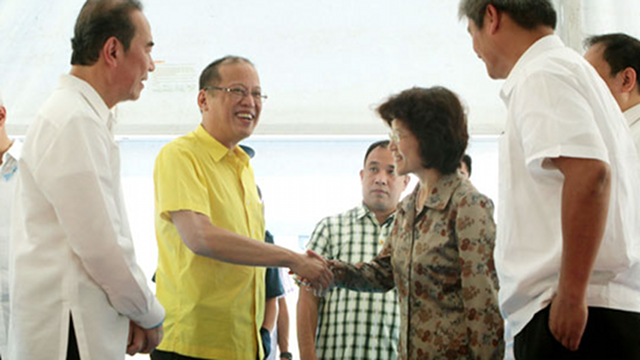SUMMARY
This is AI generated summarization, which may have errors. For context, always refer to the full article.
MANILA, Philippines – Behind the word war between the Philippines and Cambodia is their decades-long relations with China.
China finds itself at the center of the conflict between the two countries after the Association of Southeast Asian Nations (Asean) chair, Cambodia, decided not to issue a traditional joint statement for the first time in 45 years.
Both the Philippines and Cambodia receive aid from China.

Zachary Abuza, a political science professor at Simmons College in Boston, believes unconditional aid has influenced Cambodian Prime Minister Hun Sen’s government to side with China. “The Chinese have offered absolute ‘no strings attached’ aid,” Abuza said in an interview on Rappler’s Talk Thursday.
He explained that China’s loans are unlike those from the United States of America, Japan, and European countries. He said these countries have tried to impose condition on aid to improve human rights, women’s rights, civil society, and non-government organizations.
“Hun Sen, like many dictators, hates these conditions on aid,” Abuza explained. (Watch more in the video below)
A month before the Asean summit in July, for example, China loaned about US$430 million to Cambodia for two national road projects, according to The Phnom Penh Post.
Other forms of Chinese aid to Cambodia include the following:
- 50,000 sets of military uniforms in 2011
- $600-M for government projects when Chinese President Wen Jiabao visited Cambodia in 2006
- $550,000 for a hospital project, donated by the China Foundation for Peace and Development in June 2012
- $2-M deal with China’s biggest technology company, Huawei, for a hotline and traffic control project
- Two Chinese-built MA60 aircraft delivered in June 2012
-
$19-M defense aid as part of a military agreement with China
Old friends
China’s current relations with Cambodia go as far back as the mid-20th century.

China then supported the Khmer Rouge, which, according to Abuza, was the “mortal enemy” of the Cambodian People’s Party ruled by Hun Sen. When the Khmer Rouge leadership surrendered to Hun Sen in 1998, China also supported the new government through loans, aid, and investments.
In Sophal, an international relations professor at the University of Cambodia, echoed the view that the decision not to issue a joint statement was influenced by China. He said China gives Cambodia financial and political support.
He noted other factors that influence Cambodia, however, which means China was not the sole deciding factor in the failure to issue a joint statement. These factors include the United States, which also gives Cambodia economic aid, as well as pressure to ensure unity within Asean.
Sophal added that before blaming Cambodia, other countries should first take a look at the work of previous Asean chairs. He said countries that used to chair Asean, like Indonesia, have also failed to solve South China Sea conflicts.

“This conflict takes more time to solve,” Sophal said.
Recipient, too
Like Cambodia, the Philippines also receives aid from Beijing. In mid-July alone, President Benigno Aquino III led the inauguration of an aqueduct project that was a product of a $116-M loan from China.
“We would like to thank China for funding this important project. This is proof that a strong relationship with our neighbors allows us to quickly address problems and serve our citizens,” Aquino said in his speech before an audience that included Chinese Ambassador to the Philippines Ma Keqing.
The loan came amid the lowest point in Philippine-China relations in years, involving contested portions of the South China Sea after a standoff in Scarborough Shoal last April.
The difference between the Philippines and Cambodia, at least during the Aquino administration, is in their government’s responses to China.

China sees Aquino as “provocative” as opposed to his predecessor, former President Gloria Macapagal-Arroyo, who was seen as “considerably more receptive” to Beijing. “The former government could be bought; the current government cannot,” said an International Crisis Group (ICG) correspondence with a source it did not name.
While both recipients of Chinese aid, the Philippines and Cambodia now engage in a blame game after the Asean Ministers’ Meeting.
Recently, the two countries have traded barbs over the Asean’s failure to issue a joint statement. The Philippines and Cambodia want each other to explain the issue sparked by their ties with China. – Rappler.com
(The authors are students of the Royal University of Phnom Penh who are currently interns of Rappler.)
Add a comment
How does this make you feel?
There are no comments yet. Add your comment to start the conversation.